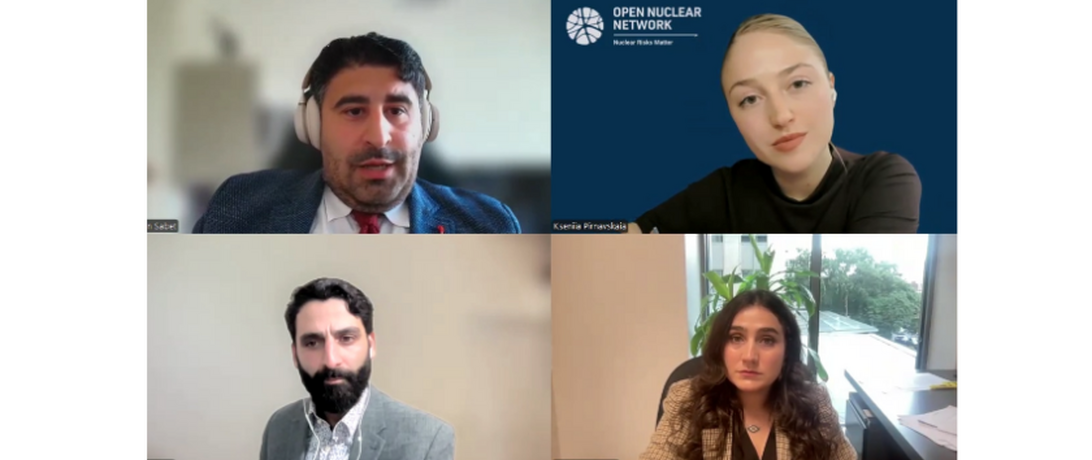
Sanctions have snapped back - now what? This briefing lays out how nuclear risk, diplomacy and regional dynamics are shifting.
Concrete analysis, policy cues and next steps ahead.
Why this conversation - and why now
With the 30-day “snapback” window for reimposing UN sanctions on Iran closing at the time of the event, ONN convened experts to assess what the day after could look like and what it means for nuclear risks across the Middle East and beyond. The discussion grounded viewers in recent developments—from the “12-day war” to the E3’s move to trigger snapback—and then worked through likely pathways for escalation, transparency gaps and diplomatic off-ramps.
Speakers:
- Nicole Grajewski, Fellow, Nuclear Policy Program, Carnegie Endowment for International Peace
- Farzan Sabet, Managing Researcher, Sanctions and Sustainable Peace Hub, Global Governance Centre, Geneva Graduate Institute
- Emad Kiyaei, Director, Middle East Treaty Organization (METO); Director, AiXist
Takeaways
Snapback raises nuclear risk - but not necessarily a dash to a bomb
- Risk up: All three speakers assessed heightened near-term risk: reduced cooperation with the IAEA, more opacity around enrichment and centrifuge manufacturing, and a greater chance of covert activity or going “deeper underground.”
- But: On balance, a deliberate weapons decision in the next year remains unlikely, in part because Iran’s programme and security environment have been degraded and penetrated, raising the probability of detection and failure.
Transparency will erode further
- Since early 2021, and sharply since the June hostilities, IAEA visibility has already fallen. Snapback would likely freeze or end most remaining cooperation, with possible exceptions for facility-specific safeguards (e.g., Bushehr-related activities). Expect widened verification gaps on stockpiles, manufacturing sites and damage assessments.
NPT withdrawal is possible leverage, not the base case
- Tehran may use NPT withdrawal to gain bargaining power, but full exit is still low-probability in the near term. Why? Likely pushback from Russia and China, who provide economic and diplomatic lifelines and prefer to avoid an NPT crisis; plus the escalatory costs for Iran.
Sanctions pressure will bite - but in a different economy
- The immediate economic shock may be less dramatic than in 2018, but it strikes a weaker baseline. With the rial falling past key psychological thresholds, steeper oil discounts in Asia, and larger cuts demanded by intermediaries, Iran’s net revenue faces mounting pressure.
- Experts noted that the current sanctions system entrenches black-market networks and strengthens the IRGC’s economic role, while Iran’s pivot eastward partially reduces Western leverage. At the same time, they cautioned that the practical benefits from Russia and China remain limited compared to the rhetoric.
The bigger picture: an NPT credibility test
- Divisions among major powers are eroding the legitimacy of the non-proliferation regime. Strikes on Iran's nuclear facilities - an NPT member and non-nuclear-weapon state - by Israel, a nuclear-armed state outside the NPT, and by the United States, an NPT-recognised nuclear-weapon state, highlight credibility gaps. Combined with fractures within the P5, these dynamics make Iran’s case a broader stress test for the NPT. Without visible progress on disarmament by nuclear-weapon states, expectations of compliance from others become increasingly difficult to sustain.
How might major actors respond?
- United States/E3: Backing snapback is clear. The open question is whether Washington pursues maximum pressure 2.0 or uses the leverage to reopen talks - bandwidth and priorities will matter.
- Russia/China: Expect legal arguments against snapback’s legitimacy and selective compliance; real capacity to offset Iran’s conventional shortfalls is limited, particularly given Russia’s wartime constraints.
- Regional players: More active mediation lanes are likely. Iran’s recent outreach to Egypt and Gulf states, and venues like Cairo, matter for any IAEA-anchored fallback.
Watch & share
This webinar was recorded and is available on ONN’s YouTube channel. Please share with colleagues and policymakers who are tracking nuclear risk and regional security in the Middle East.
ONN’s mission: We combine open-source analysis, forecasting, and engagement with impact-capable networks to reduce nuclear risks and enable informed decision-making. If you’d like briefings or follow-ups, get in touch.
Article Details
Published
Topic
Program
Content Type
News
